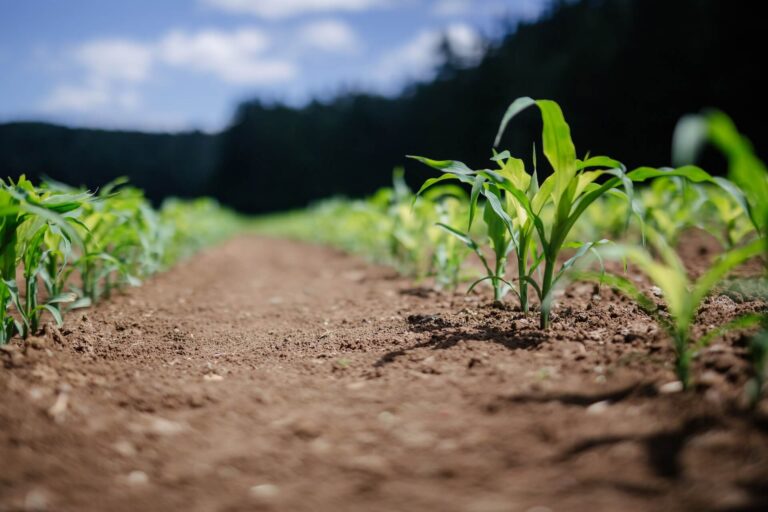Nature provides a beautiful and powerful landscape that can be used to cultivate sustainable environments. When it comes to creating spaces where people, plants, and animals come together in harmony, drawing on nature’s resources is essential.
From composting to renewable energy solutions – such as solar or wind power – there are a multitude of ways we can work with nature instead of against it.
In this blog post we’ll explore how you can use the natural environment around you to create an eco-friendly space for living, working, playing…or just being!
We’ll look at practical strategies like harnessing solar or wind power – while also recognizing how important it is to use sustainable practices like composting and disposing of organic materials safely so our ecosystems remain healthy for generations to come.
Harnessing renewable energy sources
As concerns about the environment and climate change continue to grow, the concept of sustainable agriculture has become increasingly important.
One critical component of sustainable agriculture is the incorporation of renewable energy sources like solar or wind power.
By harnessing the power of the sun or wind, farmers can reduce their reliance on nonrenewable energy resources and minimize their carbon footprint.
This shift towards green agriculture not only benefits the environment but also has economic benefits for farmers as they can potentially save money on energy costs in the long run.
Planting the right kinds of trees
Planting the right kinds of trees can have multiple benefits for not only the environment but also the economy.
By strategically planting trees in areas where they can provide shade during the summer and insulation during the winter, we can reduce the amount of energy consumption needed to cool or heat our homes and buildings.
This can lead to significant cost savings on utility bills and a reduction of our carbon footprint. Sustainable agriculture practices like this can make a big impact on the overall health of our planet.
Incorporating green agriculture techniques in our everyday practices can help ensure we have sustainable food sources for generations to come.
Using composting to safely dispose of organic materials
Composting can play a significant role in reducing greenhouse gas emissions, promoting healthy soil, and improving overall soil quality.
In addition to being a sustainable food practice, composting can also help farmers reduce their reliance on chemical fertilizers and pesticides, promoting green agriculture practices and healthier environments for plants, animals, and people alike.
Whether you’re an experienced gardener or just starting out, composting can be an easy and affordable way to contribute to a more sustainable future.
Incorporating rainwater catchment systems
Rainwater catchment systems are a simple yet effective way of conserving water and promoting sustainable agriculture.
These systems work by collecting rainwater that falls on rooftops and other surfaces, storing it in tanks, and reusing it for irrigation or other non-potable purposes.
Incorporating such systems into agricultural practices can significantly reduce the amount of water needed from traditional sources, thereby easing the strain on water resources and, in some cases, saving on water bills.
Implementing these systems is just one of many examples of green agriculture practices that promote sustainable food production and a healthier environment. By embracing these practices, we can help create a brighter and more sustainable future for all.
Implementing natural building materials
Sustainable agriculture practices have become more and more prevalent in recent years as people recognize the impact that conventional farming has on the environment.
However, agriculture isn’t the only industry that can benefit from being more environmentally conscious. The construction industry, for example, can implement natural building materials like stone, clay, and straw bales to create more sustainable buildings.
By incorporating these materials into construction projects, we can reduce our dependence on non-renewable resources and create buildings that are more energy-efficient and environmentally friendly.
Implementing natural building materials is a key part of green agriculture and sustainable food systems that prioritize the health of people, animals, and the planet.
Taking advantage of living systems with xeriscaping principles
Xeriscaping, or the use of water efficient landscaping techniques, has taken on new importance in sustainable agriculture and green agriculture practices.
By taking advantage of living systems, the principles of xeriscaping can conserve water and create a beautiful landscape that is both functional and sustainable.
Beyond just aesthetic appeal, xeriscaping can help us to reduce water waste, lower maintenance costs, and improve soil quality without relying on harmful chemicals or heavy irrigation.
As we work towards a more sustainable food system, let’s not forget the potential benefits of using xeriscaping principles in our own gardens and landscapes.
By prioritizing water conservation and embracing the natural rhythms of our local environment, we can create beautiful gardens that are both beneficial to the planet and to our own well-being.
sustainable agriculture is key to combatting climate change. It requires significant investment in renewable energy sources such as solar and wind power but can benefit the environment and farmers economically.
With more people becoming aware of the costs associated with global warming, it is essential to take concerted action towards developing clean energy solutions for our agricultural systems.
Beyond green initiatives that promote eco-friendly farming practices, there should also be risky investments made in research and development projects that are aimed at driving down the cost of solar and wind technology. Together, we can build a greener future for ourselves and future generations of farmers.


